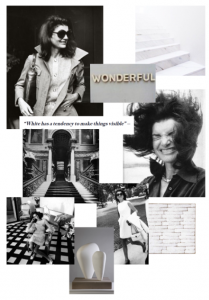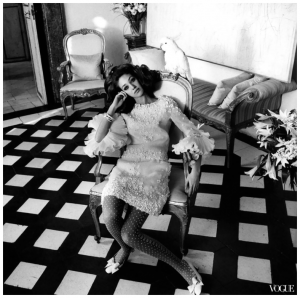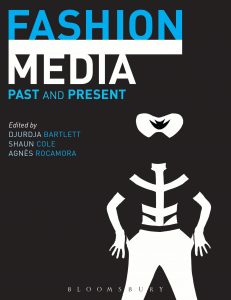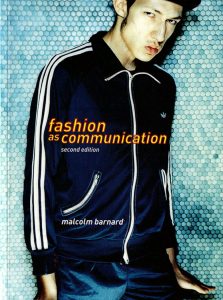In this text Sanda Miller demonstrates that fashion magazines have a double function in society: they are not only “repositories of the progress of fashion and culture”, but also “self-styled barometers of taste”. She bases her argument on the historical evolution of the fashion magazine, that she traces back to its origins in 1672 (Jean Donneau de Visé’s ‘Le Mercure Galant’). Given that its apparition coincides with the birth of philosophical aesthetics and the emergence of the art critic in the midst of the Salons, Sanda Miller proposes that the role of the fashion magazine is more complex than a simple portrayal of popular dress. It can instead be a testimony of dramatic transformations in society. Furthermore, Miller concludes that it is the only source to encompass every aspect of change in eighteenth-century society, thus justifying the attribute “mirrors of their time”.
Miller reflects on the role and meaning of fashion as it evolves through the centuries. To take her idea further, it is also important to understand it’s significance today.
Ayesha Barenblat, the founder of Remake and slow fashion enthusiast, published an article in the Huffington Post on 26th July 2017, entitled “Three Ways the Fashion Industry Is Changing the World”. She describes her family’s background in clothing factories, stating firstly that fashion is for her “a way to create jobs with dignity that empower women”. She then goes on to say that fashion can be considered as “an extension of our identity” in that our choice of clothing and accessories can define (to a certain extent) our values and personality. Ayesha Barenblat views the role of fashion from a more subjective angle that Sanda Miller, but it is no less true.
As she demonstrates the theoretical worth of fashion, Miller discusses the subject of taste. Her definition of the concept (based on the writings of the eighteenth-century philosophers) describes taste as “an inborn special evaluative faculty”. But this seems to defeat the purpose of fashion magazines: why do we need to be told what is tasteful if this faculty is “inborn” and universal? Why has ‘fashionable’ become a synonym of ‘tasteful’? It could also be said that the idea is contradictory to another aspect of fashion that is personal expression: surely we all have our own individual tastes and shouldn’t have to adhere to popular preferences? In response to this, Jukka Gronow paraphrases Colin Campbell in her book ‘The Sociology of Taste’, stating that fashion “can be said to form a universal standard of taste which, however, allows for the singularity and subjectivity of individual tastes”. Fashion has become another word for popularity but it does allow for different styles that cater to individual preferences. The charm of novelty and status that fashion endows ensure it’s continual influence on our society. But when Miller goes on to say that “fashion is a functional equivalent to the principle of good taste”, her argument seems a little thin. It is evident that fashion forms a standard of taste but how to determine whether it is good taste remains unclear. A little further on Miller does nuance the statement by focusing on the word “functional”, but the question remains: how do you determine the intrinsic value of an object?
And so the appearance of philosophical aesthetics does, as pointed out by Sanda Miller, seem linked to the development of the fashion magazine and the concept of taste that it presented. But then if her final claim that fashion magazines are “mirrors of their time” is also true, what does current fashion, often described as rich and diverse yet transitory, say about our society?
BIBLIOGRAPHY
• Barenblat A. “Three Ways the Fashion Industry Is Changing the World” Huffington Post, 26th July 2017
• Gronow J. (1997) ‘The Sociology of Taste’, (Chapter: The Social Function of Style and Fashion), London, first published by Routledge





